Many people enjoy visiting abandoned, derelict “ghost towns.” It may be an interest in history that drives them or simply a tribute to those who lost their lives in these places, but the fact is that most tourists visit ghost towns in the hope of encountering a ghost!
The following is a selection of abandoned sites from all over the world; you can visit these places and maybe turn up a wayward spirit or two.
13. San Zhi in Taiwan
A space-age looking pod village stands in eerie isolation in the north of Taiwan. This village of strange looking houses was intended as a vacation resort for the very wealthy, but fatal accidents plagued the construction.
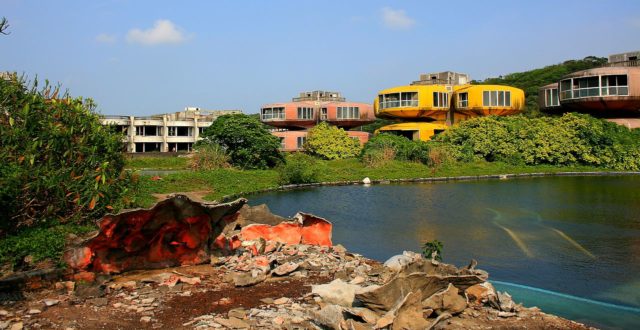
Twin disasters; a lack of financing and a lack of willingness on the part of anyone to work on the site spelled its doom, and so construction was halted and was never started again. Residents believe that the pods are haunted by the spirits of the workmen that died during construction.
After the project had been stopped, the government instigators behind the idea covered up the existence of the entire plan. No one knows who the architects were, and now there is no drive to resume the construction or redevelop the area in another way. Perhaps it is better to simply leave these futuristic looking buildings to the spirits of the dead workmen of the past.
12. Fordlandia in the Brazilian Rainforest
In 1928, the British had a monopoly on rubber from Sri Lanka (then known as Ceylon). The corner on the market of this rubber, famously based on seeds smuggled from the Amazon basin, was pushing the price of Ford’s Model A car too high.
Henry Ford was looking for a source of cheap latex to make his rubber tires and decided that the Brazilian rainforest was the place to establish his plantation.

Henry Ford planned to establish a rubber industry at Fordlandia and to build a Utopian city that would live by the ideals that had made Ford great. He was sure this would bring wealth to this part of the planet. Toward these ends, Ford built this prefabricated town and planted rubber trees during 1928. However, the project failed, as blight damaged the trees, and the Brazilians did not like the American way of life. At the end of WWII, Henry Ford was in poor health, and his company was being run by his grandson, Henry Ford II. With economic realities staring him in the face, many underperforming assets were sold off, and Fordlandia was first on the list. It was sold back to the Brazilian government for a fraction of the purchase price, and it was abandoned in 1934. The buildings were left to go back to nature, so little remains other than a few ghostly buildings, rusted equipment, and a rickety water tower.
11. Imber Village on Salisbury Plain, England
Strolling through the village of Imber on the Salisbury Plain can be a daunting exercise as there are large signs posted that proclaim “Danger. Unexploded Military Debris.
Do not leave the Carriageway”.In 1943, parts of Salisbury Plain, including Imber village, were evacuated as troops needed to prepare for the D-Day invasion. On November 1, 1943, the residents were given 47 days notice to pack up and leave. The villagers packed their belongings and left their homes; they expected to be allowed to return eventually, but that never happened.
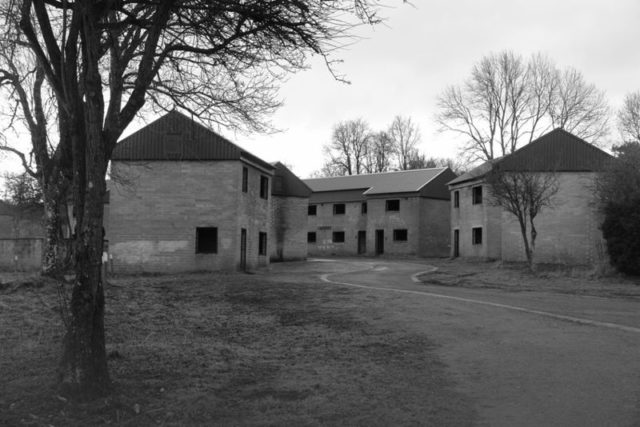
Today Imber is a ghost town, the homes remaining unoccupied because the area has become a training ground for British soldiers. There is no electricity and no water system in the village, but St. Giles Church, built in the 13th century, is still protected as the burial site of residents.
10. Oradour–sur–Glane in Department Haute-Vienne, France
The saddest WWII ghost town is Oradour-sur-Glane in France, where the Nazis massacred the entire population. On June 10, 1944, the Nazi occupying force arrived in the village after receiving a report that a Waffen-SS officer had been captured and was being held in the village.
They rounded up all the inhabitants and separated the men from the women and children. The Nazis forced the men into barns and sheds and opened fire at their legs. When they were unable to walk, the barns and sheds were set alight; only six men managed to escape, and the remaining 190 were burned to death.
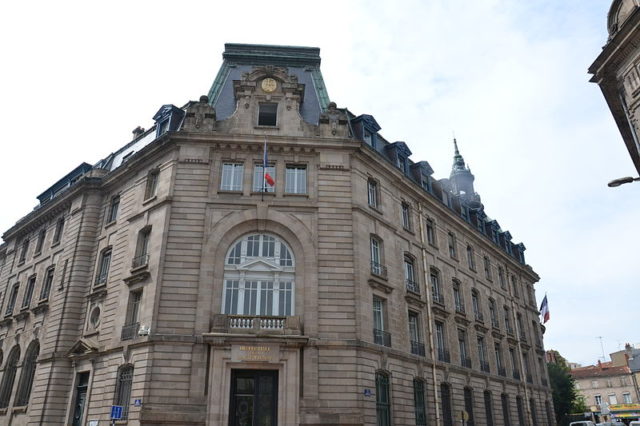
The Nazis then turned to the church where the women and children were imprisoned. They ignited an incendiary device, and when the women tried to get out, they were shot.
Only three people escaped the church; of those three, two were shot, with one woman managing to creep into the bushes where she remained hidden until she was rescued. In this horrific attack on a place of worship and on women and children, 247 women and 205 children were slaughtered. French President Charles de Gaulle insisted that the destroyed village be left as it was, as a memorial to the 642 innocent French lives that were lost on that infamous day. An entirely new village was built nearby.
9. Kolmanskop, near Luderitz on the Namibian West Coast
A railway worker, Zacharias Lewala, picked up a shiny pebble in 1908 while working on the railway line. His supervisor, August Stauch, examined the shiny stone and discovered that he was holding a diamond. Doing some amateur prospecting, he found that the area was very rich in diamonds, and soon after, the area was rife with German miners. This led to the German government’s declaration of a very large “no-go” area, called the “Sperrgebiet.” The miners soon became extremely wealthy, and the town of Kolmanskop was born.
The town looked like a German village complete with all the amenities, including a power station, ballroom, skittle alley, theater, sports fields, a hospital, school, ice factory, and a casino. The town also boasted the first tram in Africa, and it was connected to Luderitz with a railway line.
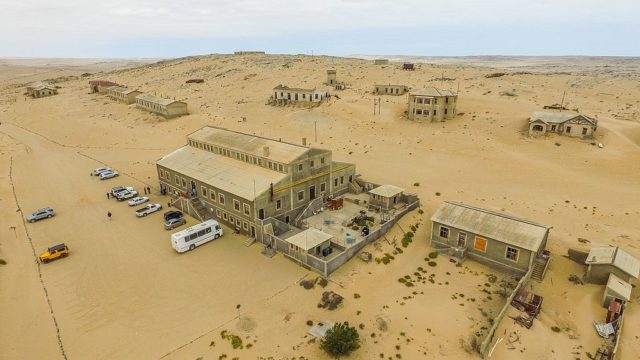
After WWI, the diamond fields slowly became exhausted. In 1954, the last of the residents left, and Kolmanskop was deserted. The stately homes and other amenities were left to the ravages of the sun, sand, and winds of the Namib Desert.
Slowly, the sand took over, and entire buildings were covered, which meant that many of the beautiful decorations inside were protected. As the winds continued to blow, the houses emerged from the sand, only for other buildings to be covered. This town changes every year as the sands move. The wind blowing through the missing windows and doors gives rise to eerie sounds, and it is not difficult to imagine ghostly images drifting through the abandoned buildings.
8. Bodie in the Sierra Nevada Mountains of California
In 1859, gold was discovered here by a group of prospectors, and a mining camp was established.
The following year one of the prospectors, W. S. Bodey, died in a blizzard, and therefore did not get to see the town that was named in his honor. The camp was named Bodie after a workman misspelled the name when making a sign for the stables – he wrote “Bodie Stables,” and the spelling stuck.
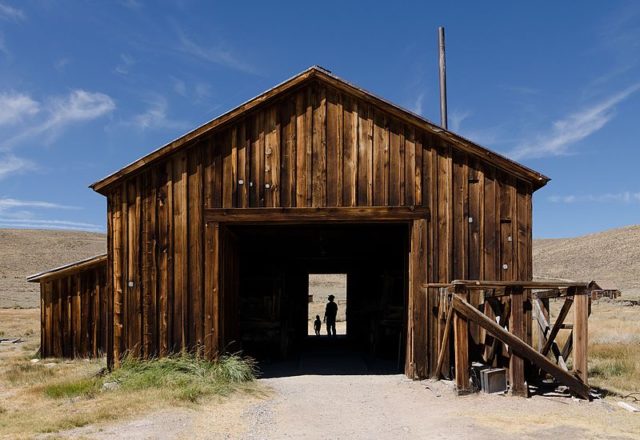
At the same time that gold was discovered in Bodie, silver was found in nearby Aurora, and silver and gold were discovered in Virginia City. Both these mining areas flourished while Bodie stagnated, until, in 1876, a new profitable gold deposit was located and the quiet mining camp was transformed into a booming Wild West town. By the time 1879 rolled around, Bodie was home to some 5,000 people, with around 2,000 buildings. In the early 1900s, the town started to decline, and the label of ghost town was first applied to it in 1915.
Today Bodie is the closest thing to a Wild West ghost town as you can get. Most buildings have fallen into some degree of decay, but some 110 are still standing, including one of the gold mills. The entire town was designated as a National Historic Landmark by the Kennedy administration in 1961, and a year later, it became known as the Bodie State Historic Park. A Park Ranger occupies one of the original buildings in Green Street.
Inside, the buildings remain as they were at the height of the town’s boom, complete with furnishings and goods that were stocked on the shelves and abandoned. This makes it is a photographer’s paradise; the eerie nature of the town comes across clearly in photographs.
You cannot visit Bodie in the winter as the access roads are closed due to snow.
7. Hashima Island, off the coast of Nagasaki, Japan
This ghostly island is a UNESCO World Heritage Site and a popular tourist destination, but it was not always so. Hashima Island lies about 15 kilometers from Nagasaki and is renowned for its abandoned concrete buildings surrounded by a sea wall. The sea wall was used to reclaim land, and it eventually tripled the original size of the island. All the buildings were constructed of concrete to protect against the regular typhoons that lash the island.
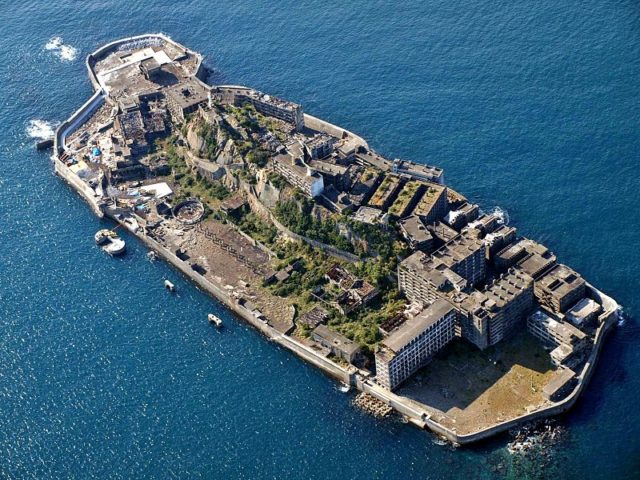
This island was built at the height of the undersea coal mining ventures that supported the rapid industrialization of Japan prior to WWII. Occupation of the island started in 1887, and at its peak, around 1959, it housed just over 5,000 people. Not all the people that worked on the island wanted to be there. From the 1930s until the end of WWII in 1945, many Chinese prisoners of war and Korean conscripted civilians were forced to work under inhumane conditions in the four shafts of the coal mine. It is estimated that some 1,300 of the conscripted labor force died on the island due to malnutrition, accidents underground, and the brutal treatment meted out by the guards.
In 1974, the coal reserves were depleted, and the mine closed, leaving the island deserted. In 2000, interest in the island was rekindled, and it became a tourist destination. Some of the sea walls had collapsed, but after restoration in April 2009, tourists again began to visit the island. In July 2015, it was granted World Heritage status. Shortly after the island was reopened for visitors, it was used as one of the film sets for the James Bond thriller Skyfall.
6. Pyramiden in the archipelago of Svalbard, Norway
Pyramiden, meaning “pyramid” in the Scandinavian languages, is a Russian coal mining settlement in Svalbard in Norway. Norwegians founded the coal mine in 1910 and sold to the Russians in 1927. They operated it until it was abandoned in 1998. At its peak, the town housed 1,200 people.
There has been little decay in the buildings as they lie within a frigid zone; they look a lot like they did when the last of the occupants left. The buildings still contain furnishings and the auditorium of the cultural center still contains “Red October,” the northernmost grand piano in the world!
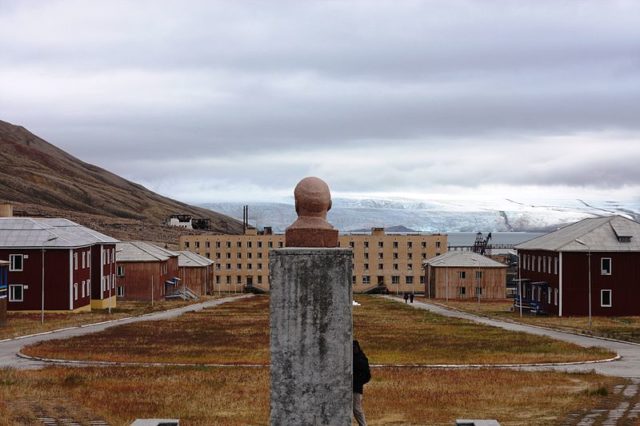
Arktikugo, the Russian mining company that owns the site, has been trying to renovate some of the buildings to make the town an attractive tourist destination. They have installed diesel generators for power, and since 2013, visitors have been able to stay in the Tulip Hotel and visit the small museum situated in the hotel. Right now there are no plans to reopen the entire town; though visitors can wander through the deserted settlement, they may not enter any of the buildings without permission.
5. Villa Epecuén in the Buenos Aries Province of Argentina
This town was founded in the 1920s and for decades it flourished, with railway lines reaching the town. At its peak, this town, situated on the eastern shore of Lake Epecuén, was home to around 1,500 residents. It was an extremely popular tourist destination, with the salty waters of the lake as a great drawing card. In the winter of 1985, however, there were extremely heavy rains that caused the level of the lake to rise dramatically.
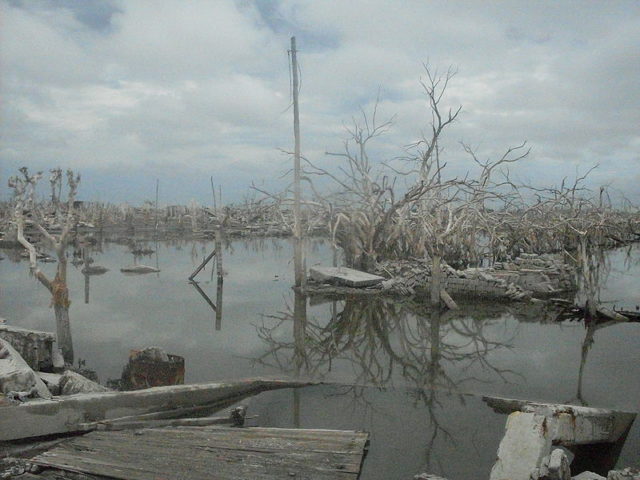
Due to the military government’s mismanagement of the civilian infrastructure in the area, the earthen wall of the dam could not contain the waters; the lake burst its banks, taking out a dike that was intended to protect the town.
The town had to be evacuated, and it remained hidden under the waters of the lake until it reemerged, Atlantis-like, from the water in 2009, when a drought hit the area and the waters receded. The town currently sits in the middle of the pampas, but when the rains come again, it will again return to the bottom of the lake, and the cycle of the rise and fall of Villa Epecuén will continue.
4. Varosha, part of the town of Famagusta in Cyprus
In the 1970s, the area of Varosha was an extremely popular tourist destination in Famagusta. It was renowned for its exciting nightlife and was popular with the Hollywood set who frequented the many superb hotels situated along John F. Kennedy Avenue. The area was home to 39,000 people prior to the Turkish invasion.
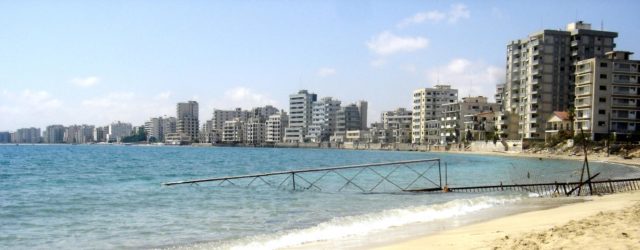
On July 20, 1974, the Greek Cypriot army withdrew to Larnaca following the invasion from Turkey. The Turkish army advanced to what is commonly known as the green line, and shortly before it faced the Greek Cypriot army in the streets of Famagusta, the entire population of Varosha fled, fearing the ensuing bloodbath. When the Turkish army gained full control of the area, they fenced it off, and still to this day, it remains inaccessible to anyone other than the Turkish military and UN personnel. This pleasant seaside resort is now a sad and eerie site, with deserted beaches and dilapidated high-rise buildings slowly being reclaimed by nature.
3. Spinalonga, in the Gulf of Elounda, next to the town of Plaka in northeastern Crete
Spinalonga, also known as Kalydon Island, is a barren, rocky island off the coast of Crete. In 1903, it was made a leper colony, and when it was closed in 1957, it was one of the last such colonies in Europe. The settlement had two entrances – the one which was used by the lepers was known as Dante’s Gate, as the lepers had no idea what awaited them on the other side.
Any leper that went in through the gate was pleasantly surprised to find that they received food, water, medical care, and their social security payments. This was unknown to lepers who, until then, had lived in isolation in the caves around the coast.
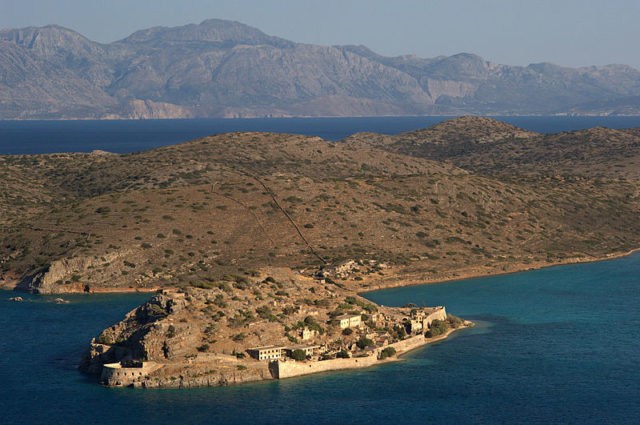
The last resident of Spinalonga, a Greek Orthodox priest, left the island in 1962. He had remained there to fulfill the requirements of the Greek Orthodox Church, which has very specific requirements for commemorating the death of a member of the church.
Today, tourists may view the ruined homes of the lepers and gaze about at the spectacular views of the sea.
2. Port Arthur, Tasmania
Port Arthur in Tasmania was once a prison settlement that is now an historical World Heritage Site.
Once, a large-scale deportation of convicts took place here over a long period. The prison closed in 1877, but a new community developed around it, and today Port Arthur has become an open air museum.
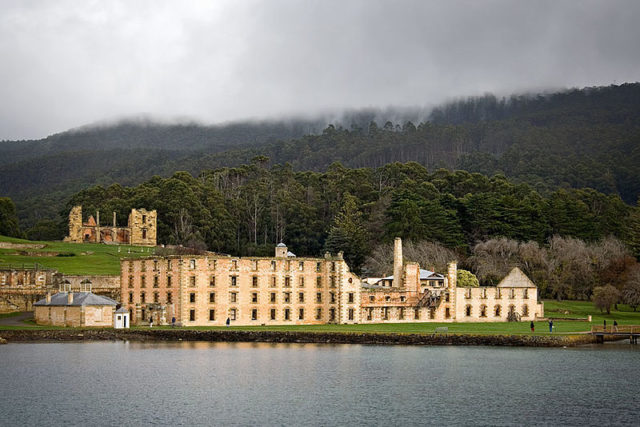
Today, it stands as a popular tourist site, attracting over 25,000 visitors each year.
It is also, very sadly, the site of a dreadful mass murder – 35 people were killed and many wounded in April 1996 by Martin Bryant, who remains imprisoned in the psychiatric section of Risdon Prison for this atrocity.
1. Pripyat, Ukraine
Possibly the most terrible and most famous of all ghost towns is Pripyat, in the Ukraine. Pripyat, a thriving town of 50,000 inhabitants in 1970, had to be hurriedly abandoned in 1986 due to the meltdown of a reactor at the Chernobyl power plant.
This catastrophic nuclear disaster forced inhabitants to flee, with no time to take their belongings.
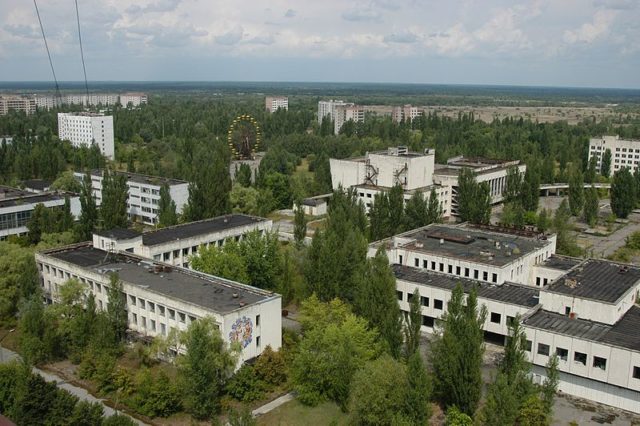
Photographs of this town show abandoned buildings (hospitals, schools, and homes) and many scattered possessions. Today, an exclusion area surrounds the damaged plant to prevent people from being affected by any remaining radiation. Workers involved in rebuilding are allowed limited working hours, and tourists may obtain day passes. The area is, however, deemed by scientists to be unsafe to live in for another 20,000 years, Mail Online reported.
Read another story from us: Ghost Towns in Dairyland
These are just a few of the many, many ghostly sites that are available to tourists today. We wish you a happy ghost-hunting holiday!
